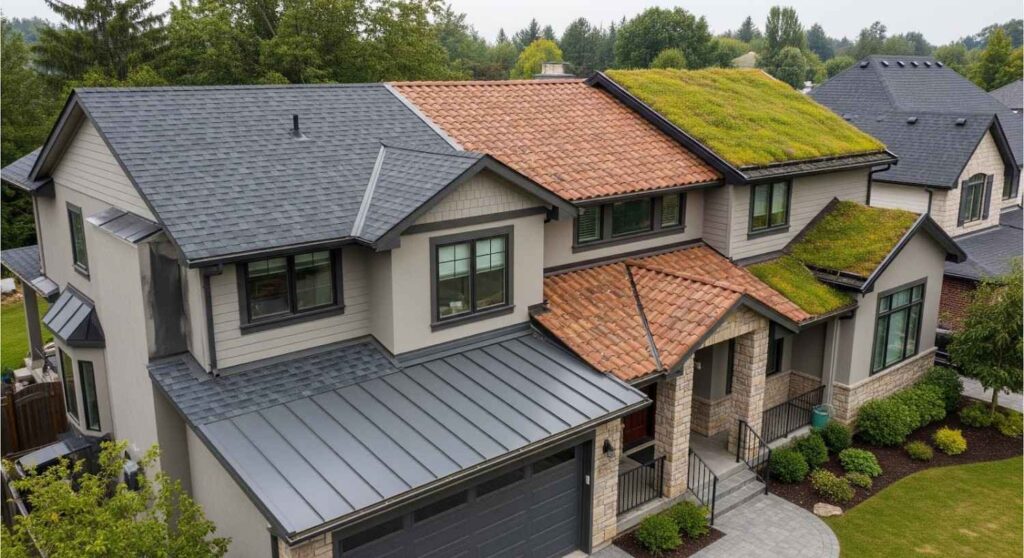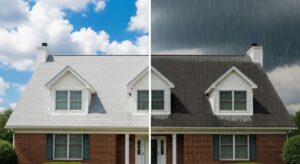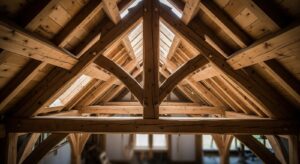Your roof isn’t just a cover over your head—it’s your home’s first line of defense. Choosing the right roofing material can impact durability, energy savings, and curb appeal. With so many modern roofing options available today, homeowners can find a solution that balances beauty, strength, and environmental responsibility.
What Are Modern Roofing Materials?
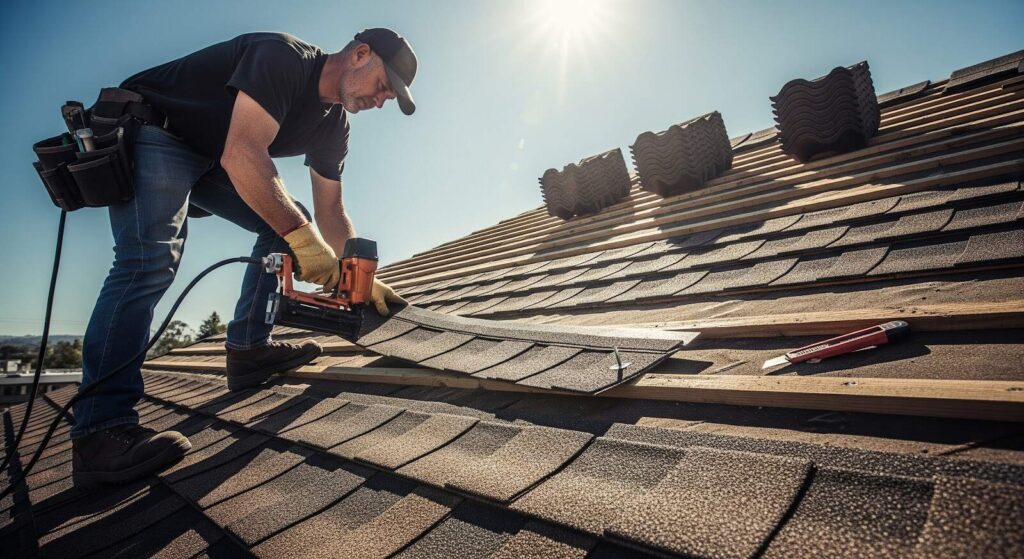
Modern roofing materials are innovative solutions designed to improve performance, extend lifespan, and reduce maintenance compared to traditional roofing options. These materials combine technology and design to withstand harsh weather, improve energy efficiency, and provide better safety. Unlike older choices that often required frequent repairs, today’s roofing products focus on durability, flexibility, and sustainability. Options range from asphalt shingles with advanced coatings to lightweight metal, eco-friendly green roofs, and synthetic alternatives that mimic natural stone or wood. Modern roofing materials offer homeowners more variety, better customization, and long-term value while helping protect homes from extreme weather conditions.
Types of Modern Roofing Materials
There are many modern roofing materials available, each with unique benefits.
Asphalt Shingles
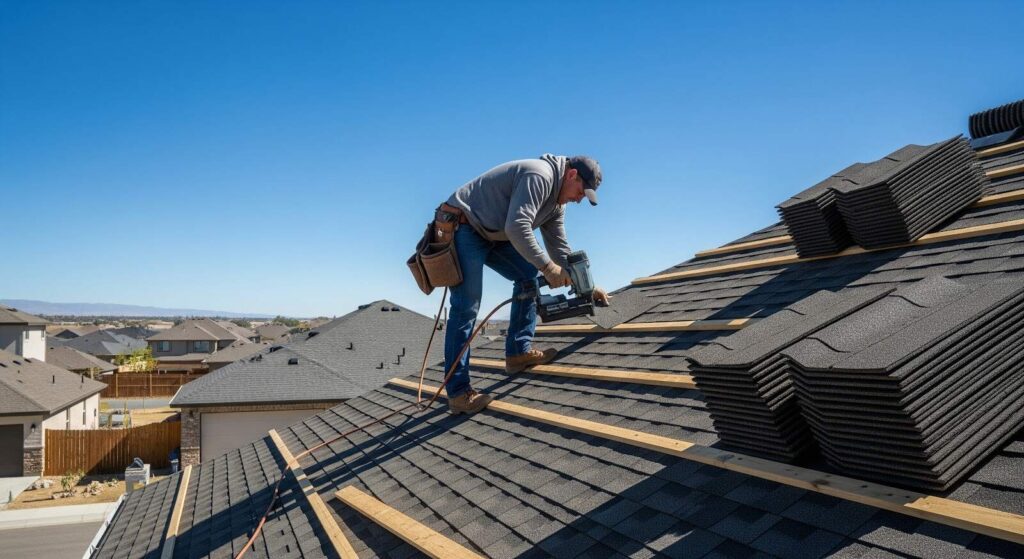
Still the most popular choice, asphalt shingles are affordable, easy to install, and available in a variety of colors and textures. Modern shingles often come with reinforced fiberglass for extra durability, UV protection, and algae-resistant coatings.
Metal Roofing

Metal roofs are quickly gaining popularity for their sleek look, incredible durability, and energy efficiency. Available in steel, aluminum, or copper, metal roofing reflects sunlight to reduce cooling costs and can last up to 50 years or more.
Clay and Concrete Tiles
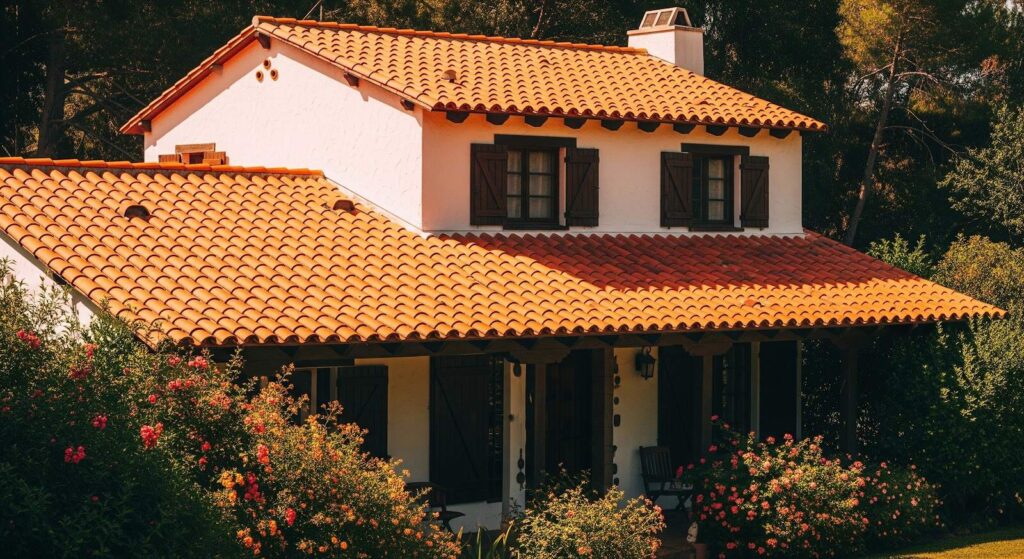
Clay and concrete tiles are classic yet modernized with new finishes and lighter designs. They are especially popular in warmer regions for their ability to regulate temperature and resist fire.
Synthetic Roofing Materials
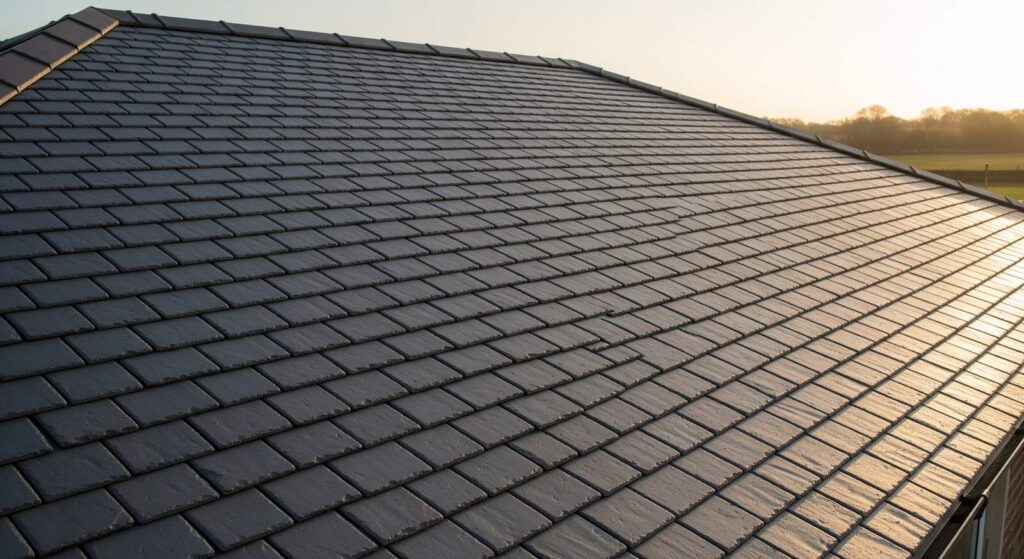
Synthetic roofing materials are engineered alternatives that mimic slate, wood, or tile while weighing less and requiring less maintenance. Made from polymers, rubber, or recycled products, they provide beauty without the downsides of natural materials.
EPDM and Rubber Roofing
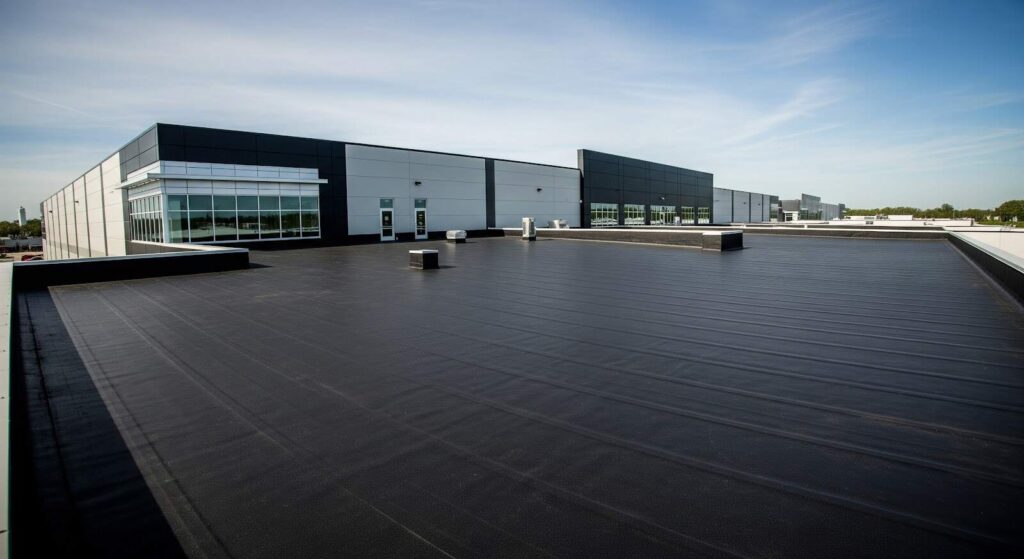
EPDM (ethylene propylene diene monomer) roofing is a strong rubber-based solution commonly used for flat or low-slope roofs. It’s known for flexibility, resistance to UV rays, and long-term water resistance.
Eco-Friendly Roofing
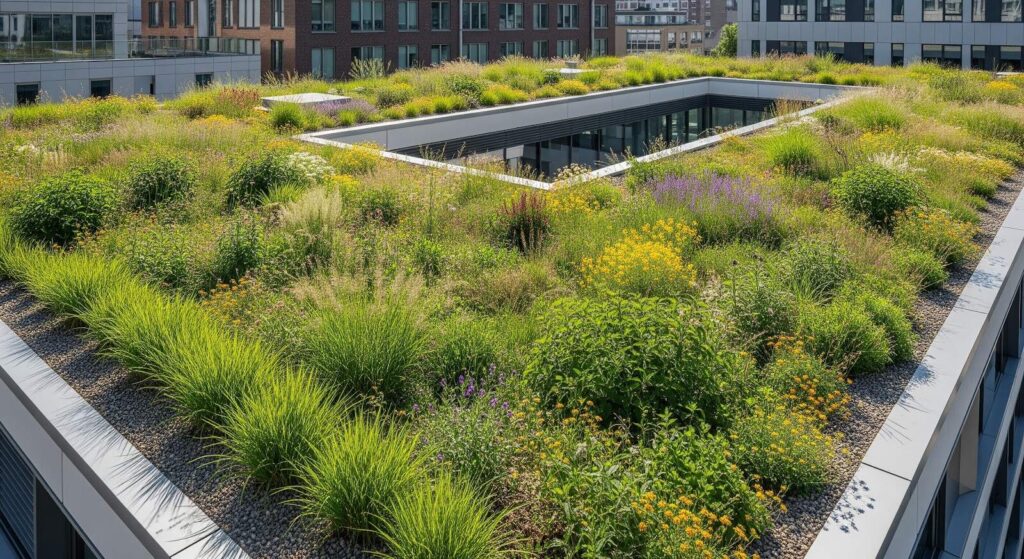
Eco-friendly roofs include green roofs with vegetation, solar-integrated panels, and cool roofs with reflective coatings. These options help reduce environmental impact, cut energy bills, and support sustainable living.
Benefits of Modern Roofing Materials
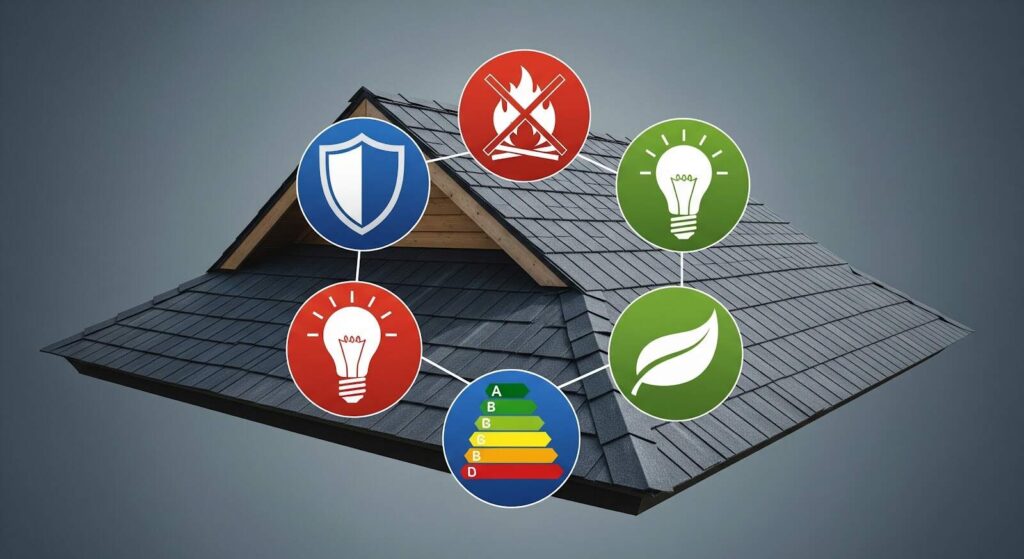
Modern roofing materials provide multiple advantages that improve both functionality and aesthetics.
Lasts Longer
Unlike older materials that degrade quickly, modern roofing solutions are designed with longevity in mind. Some last 50 years or more.
Super Durable
From heavy storms to scorching heat, modern roofs hold up under pressure. Metal roofs resist hail, while synthetic options resist cracking.
Saves Energy and Money
Reflective coatings and insulating properties help regulate indoor temperatures, lowering energy bills.
Needs Less Maintenance
Modern roofing requires fewer repairs thanks to built-in weather and algae resistance.
Better Protection from Fire
Clay tiles, metal, and synthetic options come with excellent fire resistance ratings, an essential feature for fire-prone regions.
Lighter and Flexible
Synthetic and metal roofing materials are lighter than traditional stone or concrete, making them easier to install and suitable for more structures.
Increases Home Value
A modern, attractive, and durable roof instantly boosts curb appeal and resale value.
Eco-Friendly Options
Green roofs, recycled materials, and solar integration appeal to homeowners looking for sustainable solutions.
How to Choose the Right Roofing Material for Your Home

Selecting the best roofing material depends on several personal and practical factors.
Know Your Climate
Your region’s weather should guide your decision. Metal roofs perform well in snowy or storm-prone areas, while clay tiles excel in hot, dry climates.
Check Durability and Lifespan
A roof is a long-term investment. Compare lifespans—20 years for basic asphalt shingles versus 50+ years for metal or tile.
Consider Your Budget
While upfront costs vary, think long-term. Paying more now for durable, energy-saving materials can reduce costs down the line.
Match with Your Home’s Style
Choose materials that complement your home’s architecture—slate-like synthetic tiles for traditional homes, metal panels for modern builds.
Think About Maintenance
Low-maintenance materials like metal or rubber save time and effort, while natural wood may need frequent care.
Check the Weight of the Material
Heavy materials like clay may need reinforced structures. Lighter synthetic alternatives offer flexibility without compromising style.
Consider Energy Efficiency
Look for reflective coatings, insulation properties, and solar integration to reduce energy costs year-round.
Understand Local Rules
HOA guidelines, fire codes, and local building regulations may limit material choices. Always confirm before making a decision.
Installation Process of Modern Roofing Materials
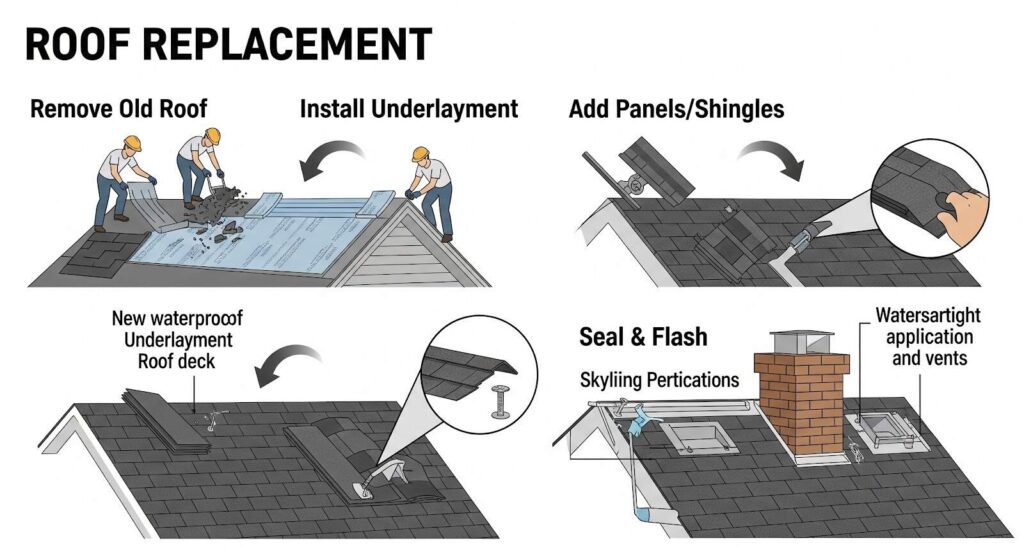
The installation process requires preparation, precision, and proper care afterward.
Preparation and Assessment
Before installation, old roofing is removed, and the deck is inspected for damage. Proper ventilation and underlayment are also considered.
Step-by-Step Installation Process
Installers lay underlayment for moisture protection, followed by the chosen roofing material in layers or panels. Flashing, vents, and sealants are added for watertight security.
Maintenance and Care After Installation
Routine inspections, cleaning gutters, and removing debris extend the roof’s life. For metal or synthetic roofs, occasional checks are enough to ensure performance.
Cost Considerations for Modern Roofing Materials
Roofing costs vary depending on material, installation, and long-term benefits.
Upfront Cost vs Long-Term Savings
While asphalt shingles are affordable upfront, metal and synthetic roofs may save money long-term by lasting decades longer and lowering energy costs.
Pricing for Different Roofing Materials
-
- Asphalt Shingles: $4–$8 per square foot
-
- Metal Roofing: $8–$15 per square foot
-
- Clay/Concrete Tiles: $10–$20 per square foot
-
- Synthetic Roofing: $9–$16 per square foot
-
- EPDM Rubber: $5–$10 per square foot
How to Get the Best Deal on Roofing Installation
Request multiple quotes, check contractor references, and avoid unusually low bids that could hide poor quality or hidden fees.
Pros and Cons of Modern Roofing Materials
Each roofing option comes with strengths and weaknesses worth weighing.
Asphalt Shingles: Pros & Cons
Pros: Affordable, widely available, many styles.
Cons: Shorter lifespan, less durable in extreme climates.
Metal Roofing: Pros & Cons
Pros: Extremely durable, energy-efficient, fire-resistant.
Cons: Higher upfront cost, can be noisy in rain.
Clay & Concrete Tiles: Pros & Cons
Pros: Fireproof, excellent in hot climates, long-lasting.
Cons: Very heavy, costly installation, brittle under impact.
Synthetic Materials: Pros & Cons
Pros: Lightweight, low-maintenance, mimics natural beauty.
Cons: Less proven long-term track record, mid-range cost.
Common Misconceptions About Modern Roofing Materials
Many myths surround modern roofing materials, but the facts tell a different story.
Modern Materials Are Too Expensive
While the upfront cost can be higher, long-term savings on repairs, replacements, and energy bills make modern roofing cost-effective.
All Modern Roofs Look the Same
Modern materials offer countless colors, shapes, and textures. From sleek metal panels to rustic synthetic shakes, variety is endless.
Modern Roofing Materials Are Difficult to Maintain
Most modern materials are easier to maintain than traditional options, often requiring only occasional inspections and cleaning.
Frequently Asked Questions
Here are quick answers to common roofing questions.
What is the most durable roofing material?
Metal and clay tiles are among the most durable, often lasting 50 years or more.
Are metal roofs suitable for coastal areas?
Yes, aluminum and coated steel resist salt corrosion, making them ideal for coastal climates.
How do modern roofs help with energy efficiency?
Reflective coatings and insulation reduce heat absorption, cutting cooling costs in summer.
What roofing materials are best for fire-prone areas?
Clay tiles, metal roofing, and synthetic materials with high fire ratings are best.
How long do modern roofing materials last?
Lifespans vary: asphalt shingles last 20–30 years, while metal, clay, or synthetic can exceed 50 years.
Are synthetic roofs as good as traditional ones?
Yes, they mimic natural looks while offering better durability and lower weight.
Can I install modern roofing materials myself?
DIY is possible for shingles, but professional installation ensures safety and warranty protection.
How can I choose a roofing contractor?
Look for licensed, insured contractors with strong reviews, detailed contracts, and transparent pricing.

